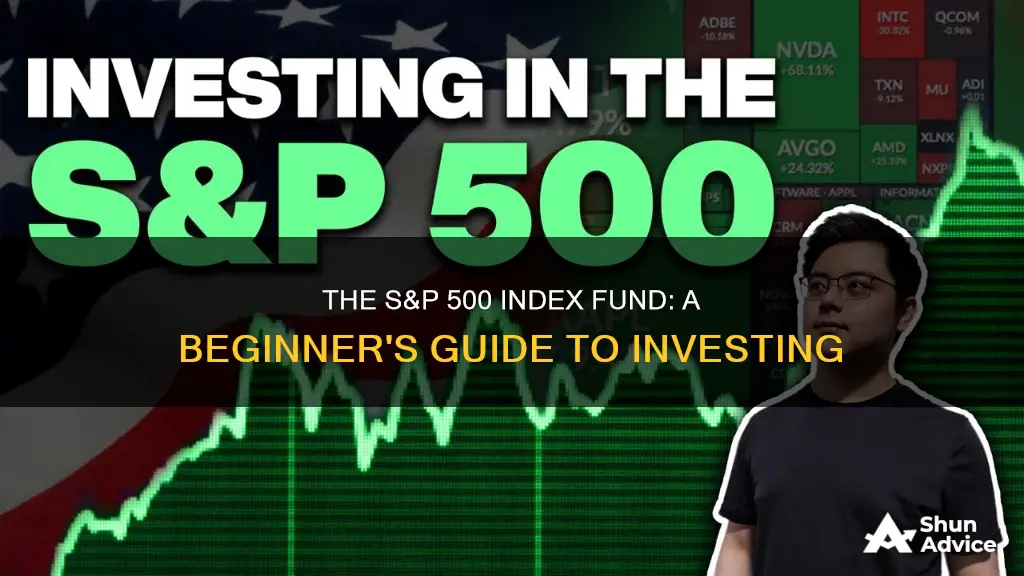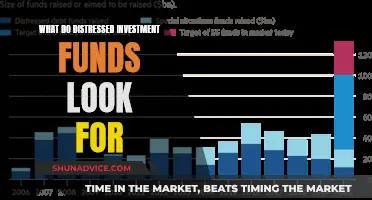
The S&P 500 is a stock market index that tracks the performance of 500 of the largest U.S. public companies by market capitalization. You can't invest directly in the index, but you can buy individual stocks of S&P 500 companies or invest in an S&P 500 index fund through a mutual fund or ETF. The latter is ideal for beginners as it provides broad market exposure and diversification at a low cost.
The S&P 500 is considered a bellwether for the American stock market, and it has returned an average of about 10% annually over time. It's a passive investment strategy, meaning it's designed to mimic the composition of the index rather than trying to pick stocks that will outperform.
There are several ways to invest in the S&P 500. You can do this in a tax-advantaged account like a 401(k), IRA, HSA, or 529 plan, or you could open a taxable brokerage account to purchase an S&P 500 index fund.
When choosing an S&P 500 index fund, consider the expense ratio, minimum investment, and dividend yield. You can also invest in an S&P 500 ETF, which has a similar strategy but trades like a stock with fluctuating share prices throughout the day.
| Characteristics | Values |
|---|---|
| How to invest | Buy individual stocks of companies in the S&P 500, or buy an S&P 500 index fund or ETF |
| Risk | Index funds typically carry less risk than individual stocks |
| What is the S&P 500? | An index composed of 500 leading U.S. companies |
| How to buy an S&P 500 index fund | 1. Find your S&P 500 index fund; 2. Go to your investing account or open a new one; 3. Determine how much you can afford to invest; 4. Buy the index fund |
| What is an index fund? | A type of investment fund – either a mutual fund or an ETF – that is based on an index |
| How to invest in an S&P 500 index fund | 1. Find your S&P 500 index fund; 2. Go to your investing account or open a new one; 3. Determine how much you can afford to invest; 4. Buy the index fund |
| How to invest in an S&P 500 with an ETF | 1. Find your S&P 500 index fund; 2. Go to your investing account or open a new one; 3. Determine how much you can afford to invest; 4. Buy the index fund |
| Advantages of investing in the S&P 500 | Exposure to the world's most dynamic companies; Consistent long-term returns; Intricate analysis not required; Can serve as a core holding |
| Disadvantages of investing in the S&P 500 | The index is dominated by large-cap companies; The index has risks inherent in equity investing; Only includes U.S. companies |
| How much does it cost to invest in the S&P 500? | Depends on the fund you're investing in. Some S&P 500 ETFs have a very low expense ratio, e.g. Vanguard's S&P 500 ETF (VOO) has an expense ratio of 0.03% |
What You'll Learn

Understand the S&P 500 index
The S&P 500 is a stock market index that tracks the performance of 500 of the largest U.S. public companies by market capitalization, or the total value of all their outstanding shares. The index includes leading companies across a spectrum of sectors, from energy to healthcare.
The S&P 500 is widely considered a proxy for the overall health of the U.S. stock market. The stocks forming the index represent about 80% of the total U.S. stock market's value. The index is weighted by market capitalization, meaning the larger the company, the greater its influence on the index.
The S&P 500 is one of the most famous stock market indexes, alongside the Dow Jones Industrial Average and the Nasdaq Composite. It is often considered the bellwether for the American stock market.
The index was first launched in 1957 and has since returned an average of about 10% annually. As of April 2024, the top 10 constituents of the S&P 500 by index weight included Microsoft, Amazon, Alphabet, Meta Platforms, and Berkshire Hathaway.
The easiest way to invest in the S&P 500 is through an S&P 500 index fund or an exchange-traded fund (ETF). These funds aim to replicate the returns of the S&P 500 by tracking it, offering investors exposure to the index's companies without the effort of purchasing individual stocks.
S&P 500 index funds typically carry less risk than individual stocks and are considered a good investment option for beginners.
A Guide to Investing in India's IT Index Funds
You may want to see also

Learn the benefits of S&P 500 index funds
S&P 500 index funds are a popular investment option for beginners and experienced investors alike. Here are some of the key benefits of investing in S&P 500 index funds:
Instant Diversification
Investing in an S&P 500 index fund provides instant diversification for your investment portfolio. The S&P 500 index comprises 500 leading U.S. companies across various industries and sectors. By investing in an S&P 500 index fund, you instantly gain exposure to a diverse range of large-cap U.S. stocks, reducing the risk associated with investing in individual stocks.
Low Costs
Index funds, including the S&P 500 index funds, are known for their low costs. They have low expense ratios compared to other types of mutual funds, making them an attractive option for investors. The low fees associated with S&P 500 index funds mean that more of your money goes towards your investments rather than fund management fees.
Solid Performance
Historically, the S&P 500 index has delivered consistent returns over the long term. On average, it has returned about 10% per year over the last century. By investing in an S&P 500 index fund, you can expect your investments to perform in line with the broader U.S. stock market.
Easy to Buy and Manage
S&P 500 index funds are simple to invest in and do not require extensive investing expertise. You can purchase them through most brokers, and many brokers offer commission-free trading for these funds. Additionally, you can set up automatic investments and dollar-cost averaging, making it a low-maintenance investment option.
Broad Exposure to Top U.S. Companies
The S&P 500 index includes some of the largest and most prominent U.S. companies, such as Apple, Microsoft, Amazon, and Johnson & Johnson. By investing in an S&P 500 index fund, you gain exposure to these dynamic companies and their performance.
Passive Investment Strategy
S&P 500 index funds are passively managed, meaning they aim to replicate the performance of the underlying index. This passive investment strategy removes the need for intricate analysis and stock-picking, making it a more straightforward investment approach.
Overall, S&P 500 index funds offer a simple, low-cost way to gain exposure to a diverse range of large U.S. companies. They provide solid long-term returns and are a great option for investors seeking broad market exposure and instant diversification.
A Beginner's Guide to Investing in Index Funds (VFINX)
You may want to see also

Compare index funds and ETFs
Index funds and ETFs (exchange-traded funds) are two simple ways to invest in the S&P 500. They are similar in that they both combine money from many individuals into a professionally managed portfolio that may contain stocks, bonds, and other assets. However, there are some technical differences between ETFs and certain index funds.
Trading Mechanism
The most significant difference between ETFs and index mutual funds is their trading mechanism. ETFs can be bought and sold throughout the trading day, much like stocks. On the other hand, index mutual funds can only be bought or sold at the end of each trading day for the price set at the market close.
Minimum Investment
Index mutual funds often have a minimum investment requirement, which can be a barrier for some investors. In contrast, ETFs typically do not have minimums, as you can purchase as little as one share.
Taxation
Index ETFs tend to be more tax-efficient than index mutual funds. ETFs generally use an "in-kind" creation and redemption process, which minimises capital gains distributions that would otherwise trigger tax events. Mutual funds, on the other hand, may generate capital gains when the fund manager sells holdings to meet redemptions, potentially leading to a tax liability for investors.
Fees
Management fees tend to be lower for ETFs. However, buying and selling ETFs could incur trading fees, depending on your brokerage. In contrast, many index mutual funds can be bought directly from the issuer without commissions.
Liquidity
Since index mutual funds are bought and sold at the end of the trading day, liquidity is not as readily available as with ETFs.
Performance
The returns of ETFs and index funds are generally very similar when they track the same index, as both aim to replicate the performance of their benchmark. Any differences in returns are usually minimal and often come down to tracking error, expenses, and how dividends are handled.
Suitability
ETFs may be more accessible and easier to trade for retail investors because they trade like shares of stock on exchanges. They also tend to have lower fees and are more tax-efficient.
Summary
Both index funds and ETFs can provide investors with broad, diversified exposure to the stock market, making them good long-term investments suitable for most investors. The choice between the two depends on factors such as investment goals, tax considerations, liquidity needs, and trading frequency.
Pension Investment Funds: Choosing the Right Option for You
You may want to see also

Choose a brokerage account
You can purchase index funds and ETFs in a taxable brokerage account, or if you're investing for retirement, in a 401(k) or IRA, which come with added tax benefits.
If you don't already have a brokerage account, you'll need to open one to buy investments. You can use the money you deposit into the brokerage account to purchase S&P 500 stocks or funds, which will then be held within that account.
If your ultimate goal is to invest for retirement, consider investing in the S&P 500 through a 401(k) or IRA rather than a taxable brokerage account.
- Account fees and minimums: Be sure to review the account fees and minimums associated with the brokerage account. Some accounts may have minimum deposit requirements or charge monthly maintenance fees. It's important to understand the cost structure before opening an account.
- Investment choices: Look for a brokerage account that offers a wide range of investment options, including stocks, bonds, mutual funds, and ETFs. This will give you flexibility in building your investment portfolio.
- Customer support: As a beginner investor, it's important to choose a brokerage account that offers strong customer support. Look for a platform that provides educational resources, easy access to customer service representatives, and user-friendly tools to help you make informed investment decisions.
- Mobile app capabilities: If you plan to manage your investments on the go, consider choosing a brokerage account with a user-friendly mobile app. Look for an app that allows you to easily monitor your investments, execute trades, and access research and analysis tools from your mobile device.
- Other features: Consider any additional features that may be important to you, such as automated investing, tax-loss harvesting, or access to financial advisors. Different brokerage accounts offer different features, so it's important to identify what matters most to you.
- Merrill Edge® Self-Directed
You can also refer to Bankrate's list of best brokers for beginners:
- Fidelity Investments
- IBKR Lite
- SoFi Automated Investing
High-Speed Trading Funds: Strategies for Smart Investing
You may want to see also

Set up recurring investments
Setting up recurring investments is a great way to automate your investing and ensure you're contributing to your financial goals on a regular basis. Here's a step-by-step guide on how to set up recurring investments in an S&P 500 index fund for beginners:
- Choose an S&P 500 Index Fund: Select an S&P 500 index fund that aligns with your investment goals and criteria. Consider factors such as the expense ratio (the annual fee charged by the fund manager), sales load or commissions, and the fund's performance history. Compare different funds to find one with a low expense ratio and no sales load to minimize fees.
- Open an Investment Account: You'll need an investment account to purchase the S&P 500 index fund. Choose between a taxable brokerage account, a tax-advantaged retirement account (such as a 401(k) or IRA), or a robo-advisor platform. Consider the fees and features offered by different brokers to find one that suits your needs.
- Determine Your Investment Amount: Decide on the amount you can afford to invest regularly. Consider your financial situation and goals, and determine a comfortable amount to invest each week, month, or pay period. Remember that you don't need a large sum to start investing, as you can invest small amounts over time.
- Set Up Recurring Transfers: Fund your investment account by transferring money from your bank account. Then, set up automatic recurring transfers from your bank to your investment account. This ensures that your investments are made consistently and helps you stick to your investment plan.
- Purchase the S&P 500 Index Fund: With your investment account funded, use your broker's website or platform to purchase the S&P 500 index fund. Enter the fund's ticker symbol and the number of shares you want to buy, based on your available funds. You can also set up an investing schedule to buy the index fund on a recurring basis, taking advantage of dollar-cost averaging to reduce risk and improve returns.
Remember to consider the fund's criteria, such as the expense ratio, minimum investment, and dividend yield, when selecting the S&P 500 index fund that aligns with your financial goals and risk tolerance. Additionally, if you're new to investing, consider seeking advice from a financial advisor or conducting further research before making any investment decisions.
Vanguard Traditional IRA: Best Funds for Your Retirement Savings
You may want to see also
Frequently asked questions
The S&P 500 is a stock market index that tracks the performance of 500 of the largest U.S. public companies by market capitalization. It is considered a bellwether for the American stock market and represents nearly 80-85% of the total capitalization of the U.S. stock market.
You can invest in the S&P 500 through index funds or exchange-traded funds (ETFs) that follow the index. Index funds are passively managed funds that aim to replicate the performance of the S&P 500 index. ETFs are similar but trade like stocks, with fluctuating share prices throughout the day. Both options offer instant diversification at a low cost.
Advantages include exposure to some of the world's most dynamic companies, consistent long-term returns, and no need for intricate analysis or stock-picking. Disadvantages include the dominance of large-cap companies, inherent risks of equity investing, and the exclusion of international companies.







